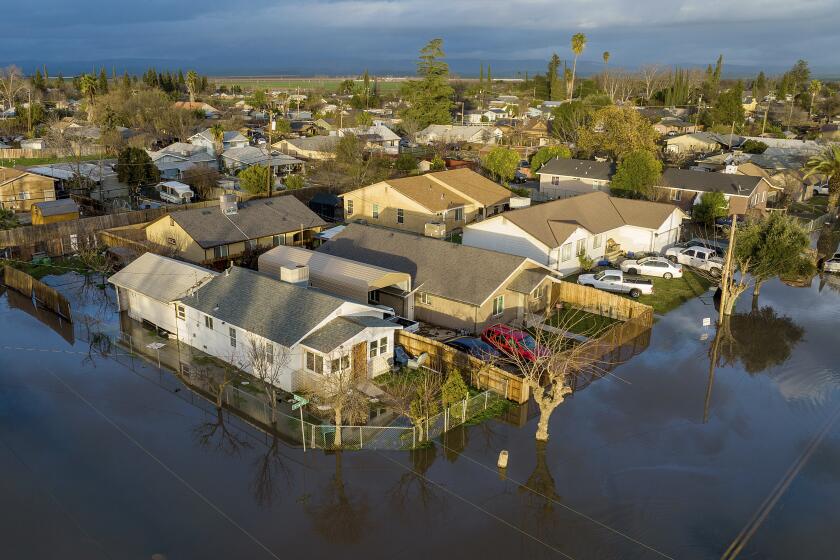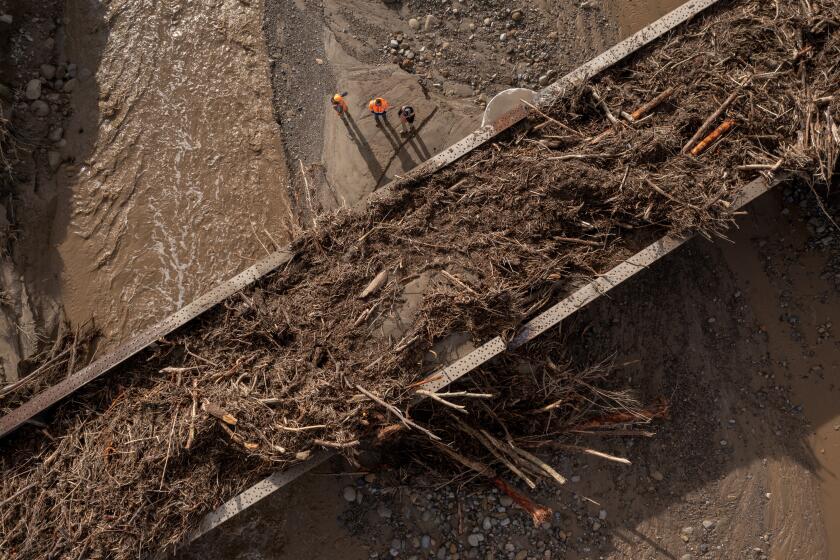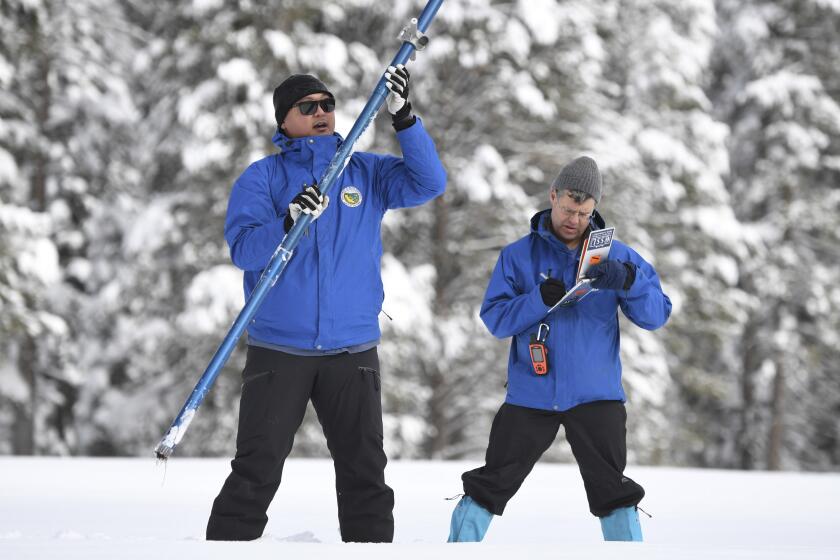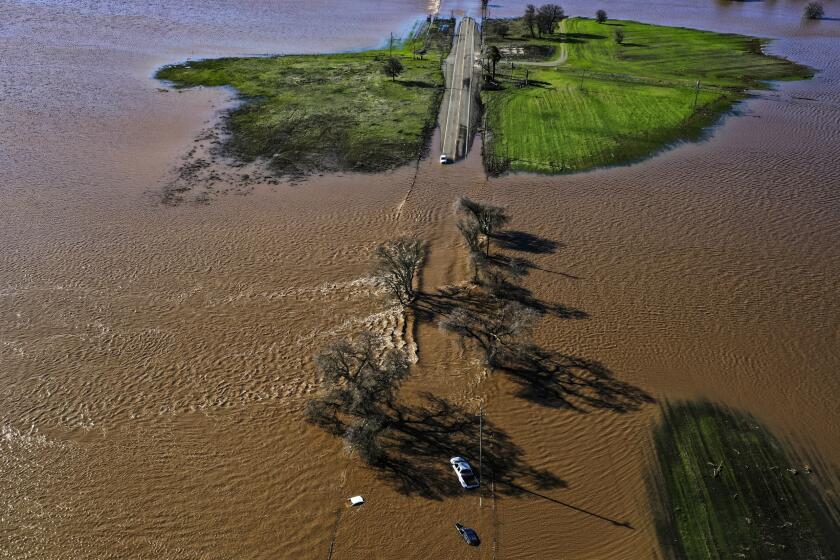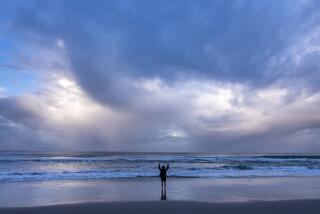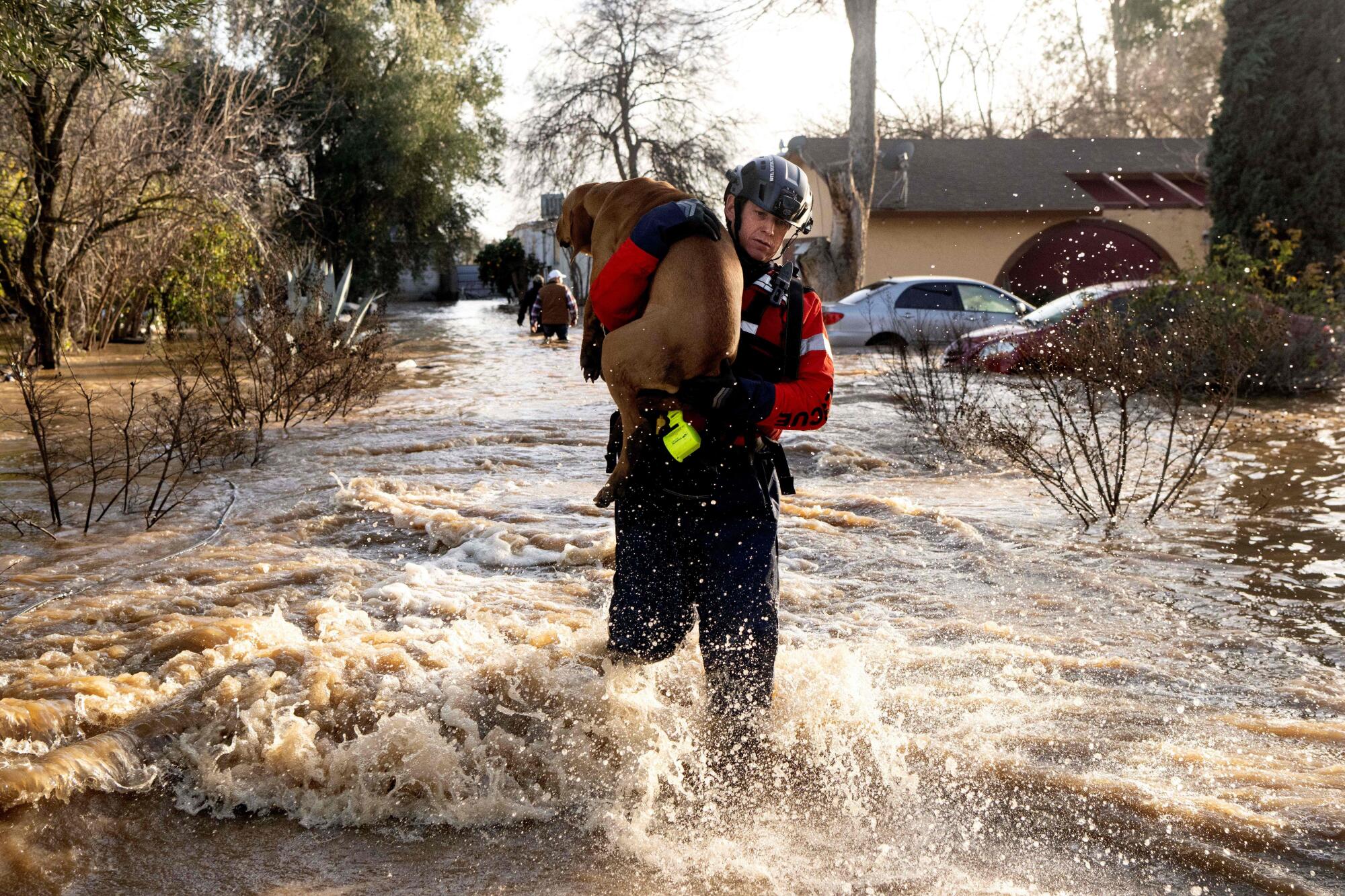
As California emerges from a two-week bout of deadly atmospheric rivers, a number of climate researchers say the recent storms appear to be typical of the intense, periodic rains the state has experienced throughout its history and not the result of global warming.
Although scientists are still studying the size and severity of storms that killed 19 people and caused up to $1 billion in damage, initial assessments suggest the destruction had more to do with California’s historic drought-to-deluge cycles, mountainous topography and aging flood infrastructure than it did with climate-altering greenhouse gasses.
Although the media and some officials were quick to link a series of powerful storms to climate change, researchers interviewed by The Times said they had yet to see evidence of that connection. Instead, the unexpected onslaught of rain and snow after three years of punishing drought appears akin to other major storms that have struck California every decade or more since experts began keeping records in the 1800s.
“We know from climate models that global warming will boost California storms of the future, but we haven’t made that connection with the latest storm systems,” said Alexander Gershunov, a climate scientist at Scripps Institution of Oceanography. “Assuming that these storms were driven by global warming would be like assuming an athlete who breaks a record was on steroids.”
A new state plan for the Central Valley calls for spending as much as $30 billion over 30 years to prepare for the dangers.
Mike Anderson, official state climatologist for California, suggested that the recent series of atmospheric rivers — long plumes of vapor that can pour over the West Coast — was a grim reminder that in a place so dry, sudden flooding can bring catastrophe.
“Each of the recent atmospheric rivers were within the historical distribution of sizes of atmospheric rivers,” Anderson said, “It will take further study to determine how warming temperatures influenced the sequence or the sudden transition from dry to wet and soon back to dry.”
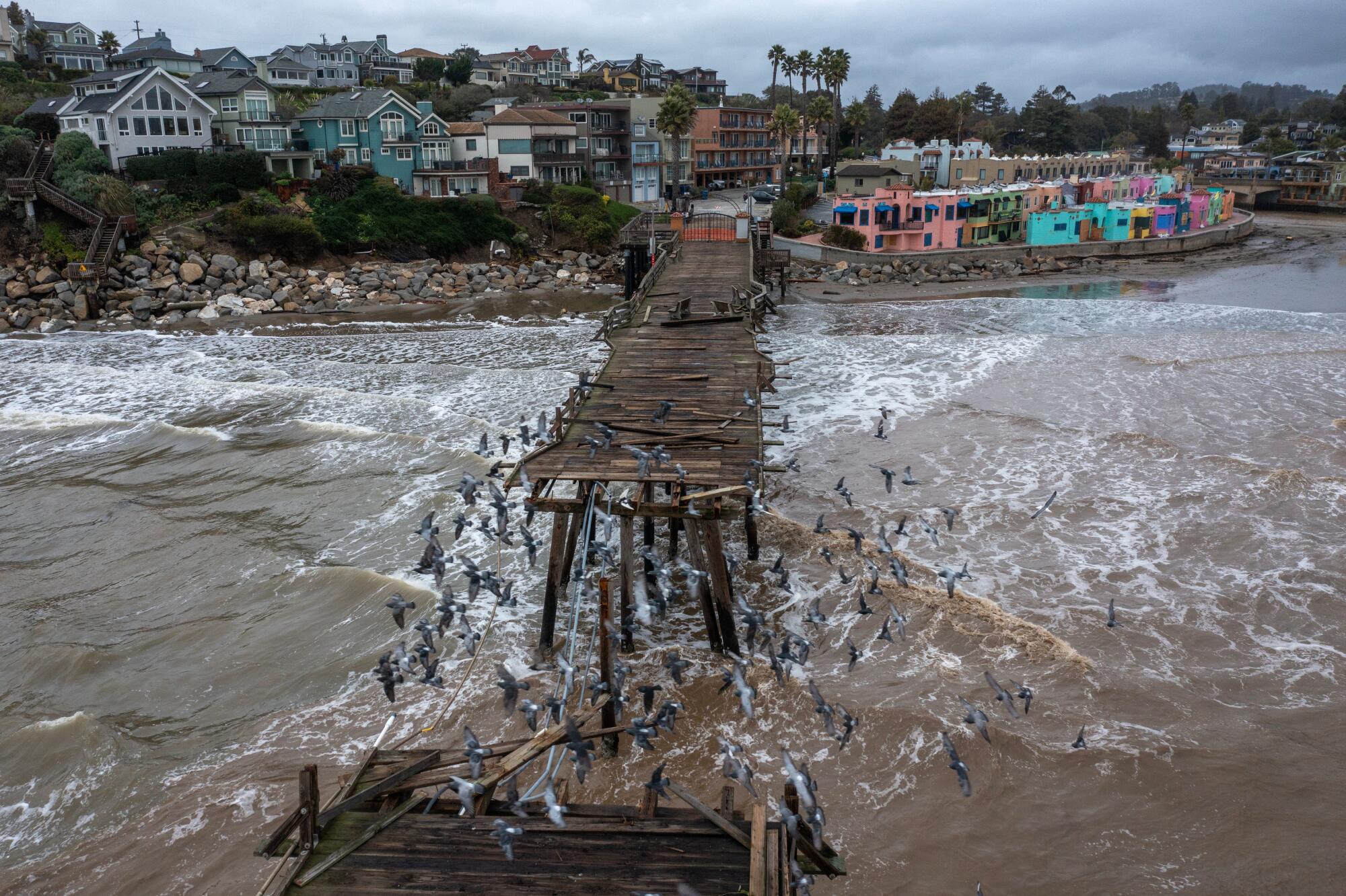
News and social media images of the storms were harrowing. Massive ocean waves demolished seawalls and a pier. Hurricane-force winds uprooted trees that crushed and killed bystanders. Breached levees flooded the Sacramento-San Joaquin River delta region, drowning motorists.
The parade of storms also dumped desperately needed snow on the Sierra Nevada range — nearly 250% of average for this time of year. It also recharged giant reservoirs that had dwindled to weedy channels. In one instance, Lake Cachuma, about 15 miles northwest of Santa Barbara, rose from 36% capacity to nearly 80% in just one day.
The powerful storm that knocked out power, toppled trees — including one that killed a toddler — and flooded homes along the coast in Santa Cruz continued its march through the region.
But in a region whose water supply has been severely depleted by more than two decades of megadrought stoked by climate change, researchers suggested that some observers were too quick to reach for superlatives.
“A group I call ‘mediaologists’ always hype the current situation to make it seem worse than the last one,” Gershunov said, using a pithy play on the word meteorologists.
Although scientists still can’t say yet where recent storms rank among other epic downpours, they said they did not appear to be one of a kind.
“Overall, it was nothing as big as what we’ve gone through before,” said Jayme Laber, senior hydrologist for the National Weather Service in Los Angeles.
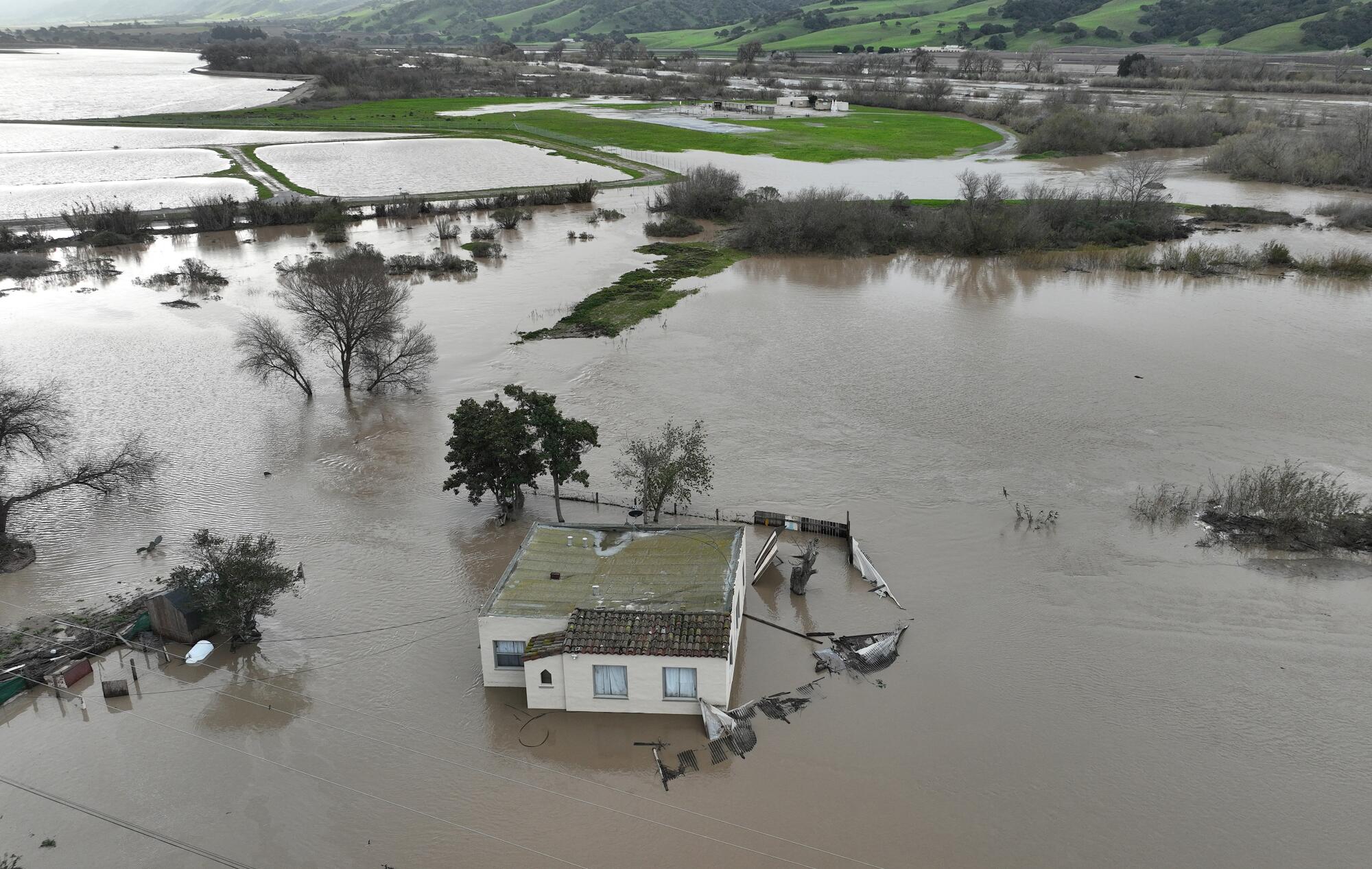
A battery of January storms has blanketed the Sierra Nevada in extraordinary snowpack, but will it last through the winter?
Indeed, this mid-winter’s precipitation was far behind the 1956 season, when California had received a whopping 85.3% of its average annual precipitation by Jan. 17, according to the Center for Western Weather and Water Extremes. As of Wednesday, California had accumulated about 70% of its average annual total, the center said.
Within the last century, Southern California experienced the “Great flood of 1938,” which killed more than 100 people; left thousands homeless and prompted officials to line the Los Angeles River with concrete as a means of flood control. Other intense storms have occurred in 1964, 1969, 1982, 1986, 1995, and 2005, when a school camp perched 3,600 feet above Pasadena in the Angeles National Forest recorded 107 inches of rain in one week.
More recently, a series of drought-busting atmospheric rivers that slammed into California in 2017 eroded the main and emergency spillways at Oroville Dam, forcing thousands of residents to evacuate.
That emergency, scientists say, was a taste of the kind of meteorological tumult Mother Nature has in store for the future: Climate models predict more frequent mega-storms fueled by warming oceans and a thirstier atmosphere due to global warming.
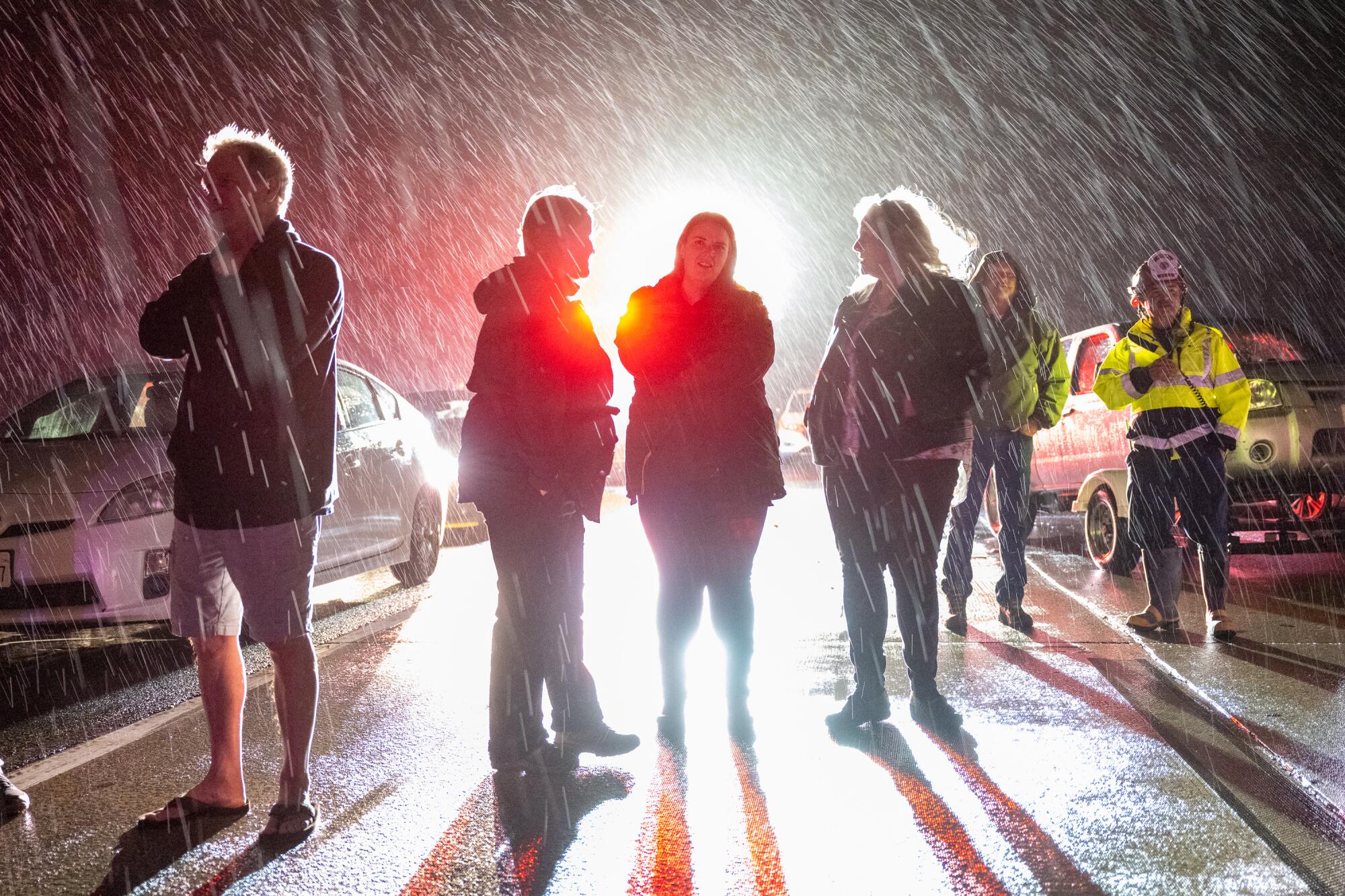
“Most recent storm systems don’t hold a candle to the kinds of extreme prolonged storms of the last century,” said Daniel Swain, a climate scientist at UCLA. “They do, however, point in the direction of the episodes of hydro-climate we can expect to see more of due to global warming.”
It’s the prospect of these larger and more damaging storms that have fueled calls to upgrade the state’s flood infrastructure and spurred efforts to capture and store water for future use.
“California’s environment is changing fast beneath our feet,” Swain said. “Future generations have huge problems ahead of them.”
While this month’s storms have provided much needed drought relief to California, they will do little to erase the larger mega-drought conditions that have gripped the American West since 2000 — conditions that are fueled substantially by global warming and contributing to a growing crisis along the Colorado River.
“Rain that falls in California stays in California,” said A. Park Williams, a climate scientist at UCLA. “That’s because the moisture delivered by Pacific storms is wrung out by huge walls of mountains from the Sierra Nevadas in the north to the San Bernardinos in the south.”
Williams, who helped establish that 2000-2021 was the driest 22-year period in the southwest in 1,200 years, said the megadrought was likely to persist through 2023, matching the duration of another mega-drought in the late-1500s.
“Although these big wet interruptions of surface water quickly refill reservoirs, which is a good thing, our underground aquifers don’t rebound nearly as easily because we’ve been mining their resources at a breakneck speed for decades,” he said.
Thousands of miles of California levees are feeling the strain of age, extreme drought and punishing atmospheric rivers.
Like other climate scientists interviewed by The Times, Williams said his research “does not show a connection” between recent storms and global warming.
“Global warming is real,” he said, “and because of it the heaviest storms around the world are getting heavier — except in California and the southwestern United States, where the weather typically swings from too dry to too wet.”
The intensity of such dry-to-wet swings in the future will be amplified by drought, rising temperatures, and continuing human exploitation of natural water resources, scientists say.
The intensity of those swings will not only test California’s ability to weather harsher storms, but it will forever alter the ecological cycles of plants and animals that have evolved here over millions of years.
Indeed, while millions of Californians were wringing their hands over weather reports generated by local and national media, biologists were trying to draw attention to the effects of two decades of drought, heat waves, wildfires and debris flows.
They say a growing list of living symbols of longevity, strength, and perseverance — desert tortoises, saguaro cactuses, bristlecone pines, cottonwood forests, giant sequoias, chinook salmon, Joshua trees — may be at an evolutionary crossroads.
“California’s species have a long history of adapting to episodic drought,” said Gary Bucciarelli, a conservation biologist at UC Davis. “But never before have they struggled to survive so many different threats at one time.”
